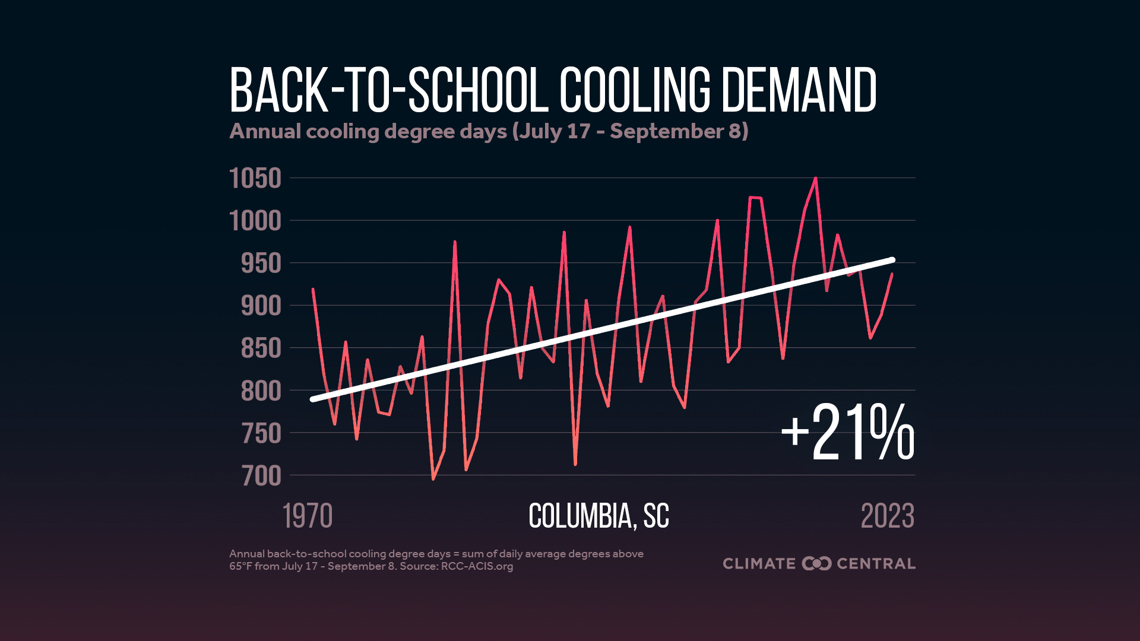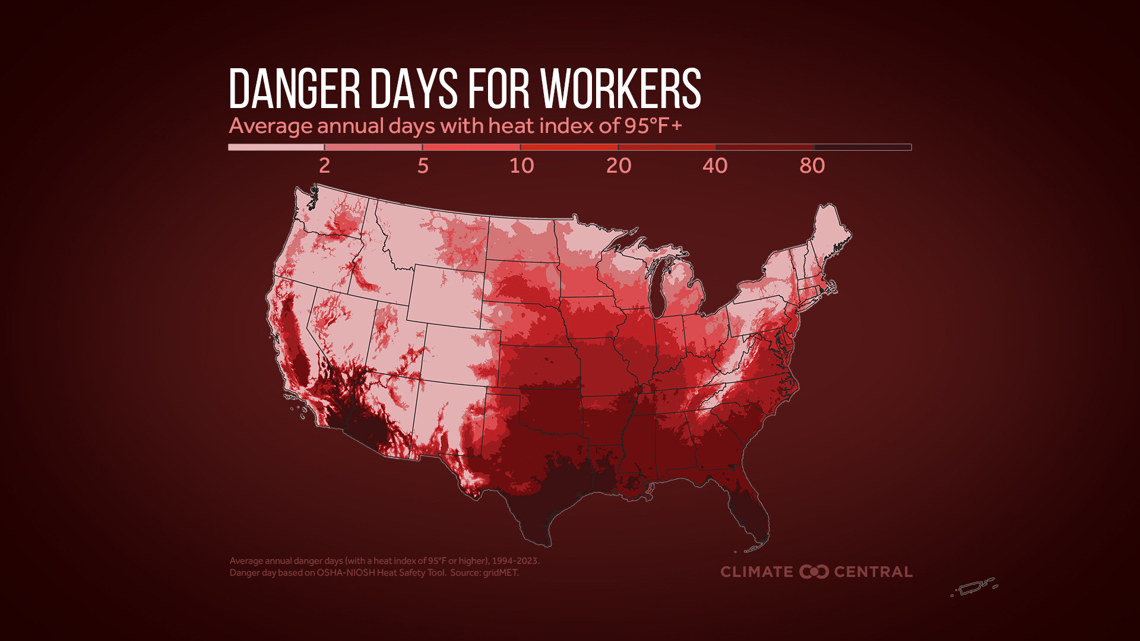COLUMBIA, S.C. — As students and staff return to the classrooms for a new school year, access to cooling is critical to ensure the health, safety, and well-being of of students and school staff in a world that continues to get warmer.
A lack of adequate air conditioning in schools is not only uncomfortable, but it can also impact students' ability to concentrate and learn in the classroom.
Children are also among those most vulnerable to heat-related illness.
As the planet warms, higher average temperatures and more frequent extreme heat weather conditions occur, there is an increasing demand to keep schools and other buildings at safe with comfortable temperatures.


This demand for cooling is measured by cooling degree days (CDD), and these values have risen over the last several decades.
CDD values are the difference between a locations daily average outdoor temperature and 65°F, an engineering standard that is considered the ideal indoor temperature.
CDD values are highest on the hottest days of the year, and these values have been steadily increasing across the United States.


Here in Columbia, SC these values have increase by 21% since 1970.
The rising number of cooling degree days also impacts workers and athletes who spend extended amounts of time outdoors.
According to Climate Central, the number of days with heat index values over 80°F has also risen since 1979. The average number of danger days for workers, or days with heat index values over 95°F is also climbing.


As schools work to meet the demand for cooling, it can also help to take precautions to protect yourself and others from heat-related illness. Some of these include having plenty of water for hydration, a place for shade, and allowing time for rest.
RELATED: Back to School: A safety checklist



